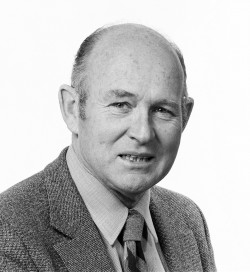Hornibrook Award
Award made every two years in 'odd' years.
Past Hornibrook Award Winners
| Year | Person | From | For |
| 2023 | Alexey Ippolitov | Victoria |
A biostratigraphic time-frame for the Mid-Late Cretaceous strata of the Southern Hemisphere, |
| 2019 | Oliver McLeod | Waikato |
Mapping the volcanic stratigraphy of Pirongia. |
| 2017 | Michaela Dobson | Auckland | Analysis of different facies in the Hells Gate, Rotorua, geothermal study area to stratigraphically reconstruct the evolution of this site. |
| 2013 | Matthew Ryan Callum Rees |
Victoria Massey |
Study of East Tasman Sea cores to provide records of vegetation-climate events for the past 500 kyr. Stratigraphic investigation of Pohangina Valley. |
| 2011 | John Irons | Massey | Oligocene outliers, Coromandel Peninsula. |
| 2009 | Rosemary Cody Joshu Mountjoy |
Victoria Canterbury |
Paleoenvironmental evolution of major ocean/climate systems in the southwestern Pacific. High resolution seismic data and seismic stratigraphy methods to characterise complex and poorly understood submarine canyon processes. |
| 2002 | Dan Hikuroa | Auckland | Jurassic Latady Formation, Antarctica |
| 2001 | Kate Wilson | Massey | Quaternary paleoceanography, ODP 1119 |
| 2000 | Avon McIntyre | Waikato | Wanganui Basin stratigraphy |
| 1998 | Andrei van Dusschoten | Otago | Stratigraphy and paleontology of Torlesse rocks, Balmacaan Stream |
| 1996 | Shaun Hayton | Waikato | Miocene-Pliocene sequence stratigraphy, Wanganui basin |
Norcott Hornibrook
Norcott (Horni) Hornibrook (1921-1994) was brought up in Tauranga, Napier and Gisborne. Immediately after leaving school he got a job as a geologist's assistant with NZ Petroleum Company in Gisborne, and then as a micropaleontology technician with the NZ Geological Survey in Wellington.
His career was interrupted by WW2 following which he returned to New Zealand and returned to the Survey and university education. When Survey micropaleontologist Harold Finlay died in 1951, Horni became chief micropaleontologist - a position he held until his retirement in 1981.
Despite his retirement Horni continued his research at the Survey right up until his death. Building on the initial work of Finlay, Horni became the father of New Zealand foraminiferal biostratigraphy. Although Horni spoke up against the creation of the Geological Society, he became one of its founder members, was one of its most active Presidents (1966-68), and one of its staunchest supporters.
Horni’s colleagues funded the Hornibrook Award in biostratigraphy.
